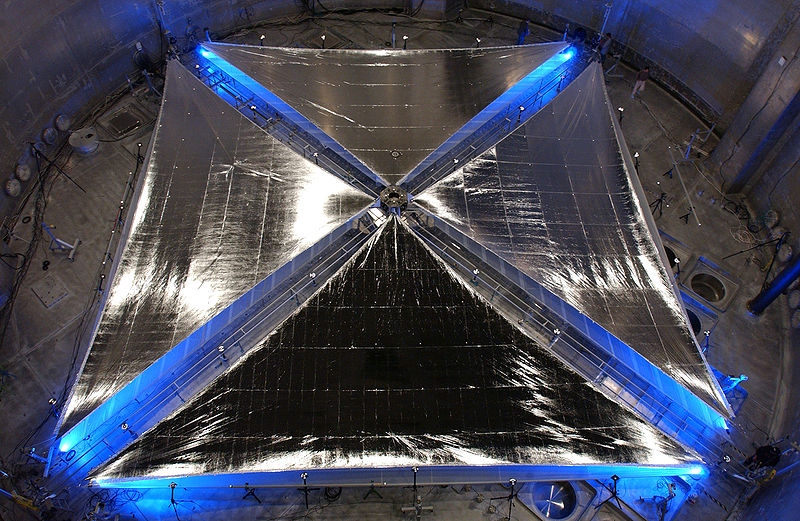The basic idea of using a light beam to power a sail attached to a spacecraft with photon bombardment has been around a long time. Eugene Sanger was a Hungarian aerospace engineer. Between 1961 and 1963, he was designing airplane propulsions systems for Junkers, a major German aircraft engine manufacturer. During his time at Junkers, he came up with the idea of using light pressure to push against a sail to power a spacecraft. Also in the 1960s, a prominent Hungarian physicist wrote about laser based space propulsion.
In the 1970s, Robert Forward, an American physicist developed the idea of using a giant laser to propel a tiny space probe to another star system. He wrote a novel called Rocheworld in which a manned spacecraft was propelled to another solar system with a huge laser. In 1974, Larry Niven and Jerry Pournelle published The Mote in God's Eye, a science fiction novel in which a race of aliens used a giant laser to power one of their spacecraft to another star system.
Although photons do not have mass, they have both energy and momentum. They can exert a tiny pressure on a reflective surface. Given enough photons, a big enough reflective sail and enough time, light can be used to accelerate a spacecraft to high velocities. Various schemes have been proposed for huge Earth and Space based lasers to beam power to propel a spacecraft with an attached sail around the solar system and even to another star system.
NASA estimates that it should be possible to send a two hundred pound space probe to Mars in a matter of a few days. A craft carrying human beings could be sent to Mars in a month. An interstellar probe on the kind envisioned by Robert Forward would have to be very small and light. Unfortunately, it is unlikely that we would be able to send humans to other stars using a laser as propose by Niven, Pournelle and Forward suggested in their novels.
Any laser used to propel a spacecraft would have to be enormous and operate in the gigawatt range. Although it would be possible to build and power such a laser on Earth, the atmosphere would interfere with the beam. Also, it would be difficult to direct the beam in a particular direction for long periods of time. It would make more sense to put the lasers in space at one of the Lagrange points where they would be stable and be able to be aimed and kept on target. Energy could be provided by solar power arrays in space. The beam could be focused by rings stationed at strategic locations to create a "Fresnel" effect.
NASA scientist Philip Lubin received a grant in 2015 from NASA to do proof-of-concept research on laser propulsion systems. He feels that this idea is about ready to move from the science fiction realm into reality. It will be interesting to see if such a system is really practical.
NASA testing a light sail:
